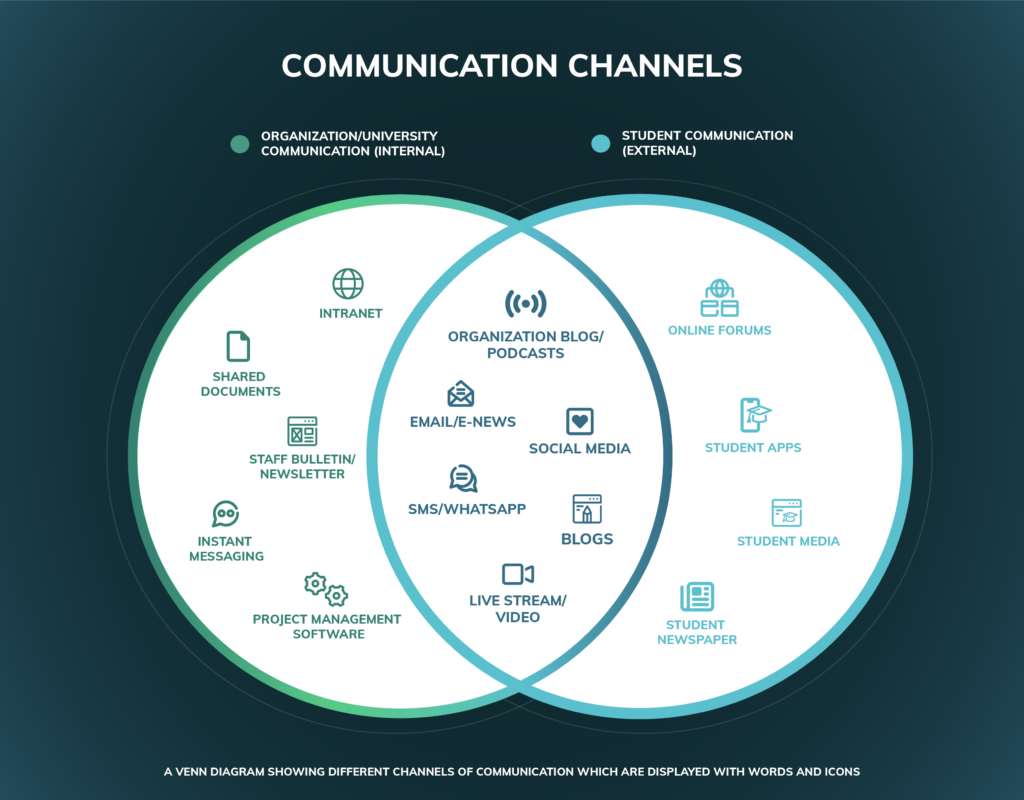Getting the word out effectively about your incremental credentialing initiatives will require both communications and marketing. Here are key channels (delivery methods) commonly used to get the word out about a state’s or an institution’s strategy on incremental credentialing:
Communications along multiple channels can garner state- and institution-wide attention and will be needed to build awareness of the changes needed—and underway—in credentialing. Remember that some channels are internal, some are external, and some channels reach both internal and external audiences.

Digital channels are becoming increasingly popular as they are typically quicker and more convenient than traditional methods. They also allow for a greater degree of flexibility, as they can be used from any location and at any time. Digital channels often provide a more personal touch than traditional methods, as they allow for the use of images, videos, and other rich media. There are nearly 20 modern digital communication channels. Some are used primarily within organizations like higher education institutions, and some enable messaging to broader, external audiences such as learners and their families.
Example of a Statewide Website Communicating the Availability of a Statewide Platform for Microcredentials and Marketing Microcredentials in New York


Credential As You Go has acquired three phases of funding to date. Lumina Foundation funded Phase I, resulting in the Incremental Credential Framework for testing. The Institute of Education Sciences, U.S. Department of Education funds Phase II (Grant R305T210063), which focuses on rapid prototyping of and research on incremental credentials with a national campaign. An anonymous private donor fund at the Program on Skills, Credentials & Workforce Policy at George Washington University funds the development of the prototype Learn and Work Ecosystem Library. Walmart funds Phase III, which focuses on systems change for expansion and sustainability of incremental credentials. The opinions expressed are those of the authors and do not represent views of Lumina Foundation, Institute of Education Sciences, the U.S. Department of Education, Walmart, or George Washington University.